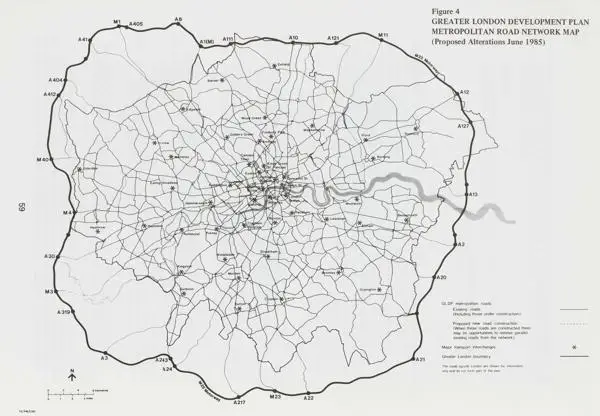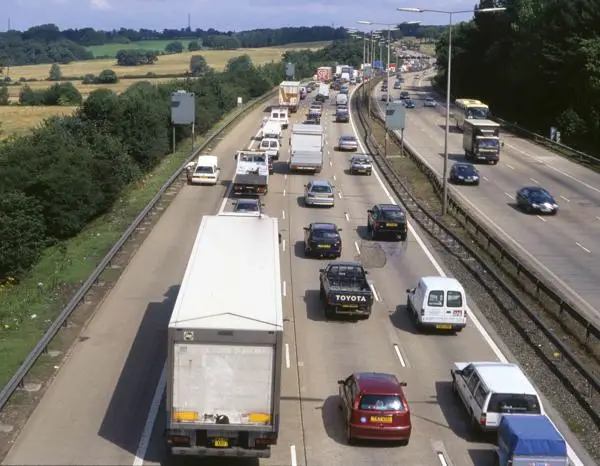M25 motorway
Introduction to London's Grand Designs
London is home to some of the world's most striking architecture and innovative engineering. Whether driven by divine purpose or the needs of a growing population, the grand designs of architects and engineers have shaped the identity of the city and the lives of Londoners.
This regular series of articles, based on a London Metropolitan Archives’ exhibition in Aldgate Square and then Guildhall Yard in 2019, delves into the historical collections at LMA to present drawings and photographs that record the development of some of London’s greatest buildings and structures. The projects cover a wide variety of aspects of life in the capital, from worship to entertainment, transport to housing, and all add to the story of the developing city. Many are still present today, but others have not survived the passage of time and exist only in memory and archives.
M25 motorway
October 2021 marks 35 years since the London Orbital Motorway or M25 was formally opened in 1986. Michael Melia tells more.

The idea of ring or orbital roads is nothing new and London’s traffic planners drew up several schemes from the early 1900s onwards. London’s North Circular Road (A406) and South Circular Road (A205) grew out of these plans by 1935. The London County Council’s Greater London Plan of 1944 looked at a series of ring roads extending much further out from London. In the 1950s central government planners were also examining similar schemes, but originally thought in terms of two separate motorways. One would run outside north London, to be called the M16, and one around south London, the original M25.
Plans developed into a single ring motorway, now just called the M25, and work began in 1975. It passes through five counties: Kent, Surrey, Buckinghamshire, Hertfordshire and Essex and was built in a series of sections. Speed of progress depended on how planning regulations were dealt with and the strength of local opposition. Overall the project took eleven years and used more than two million tonnes of concrete and 3.5 million tonnes of asphalt. Most of the motorway was initially unlit at night. The 188 kilometre (117 mile) motorway cost over £900 million at 1986 prices, more than £2.5 billion today. Prime Minister Margaret Thatcher opened the M25 in October 1986.

However, the original three lane layout was soon unable to cope with the volume of traffic. Officially called the London Orbital Motorway it was soon dubbed ‘Britain’s biggest car park’ and ‘The road to hell’ because of severe delays. Over 200,000 vehicles a day use the M25 now, some 15 percent of all UK motorway traffic. Since it opened there has been continual work to upgrade the motorway, adding extra lanes over large sections, and introducing new traffic management technology.